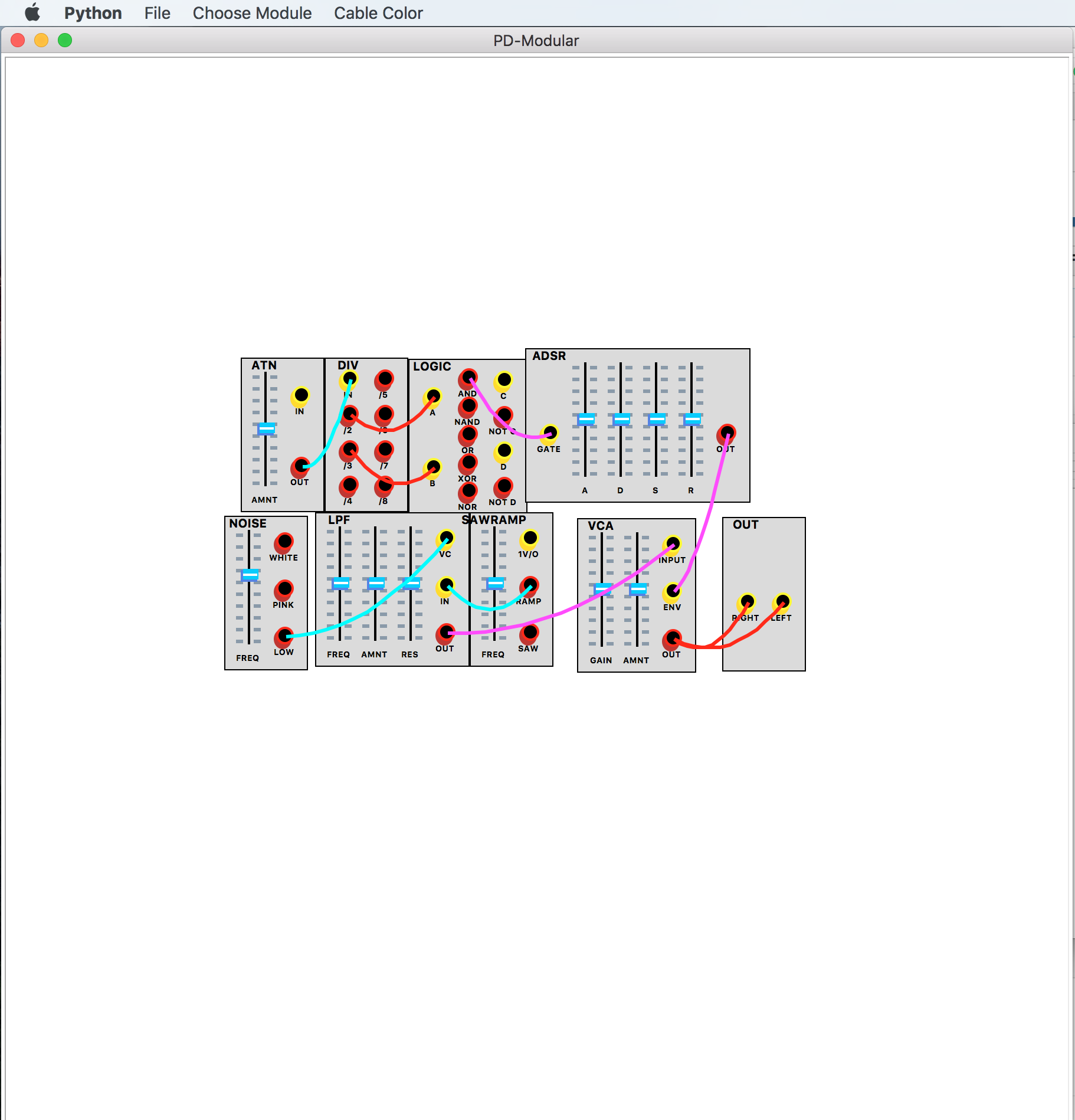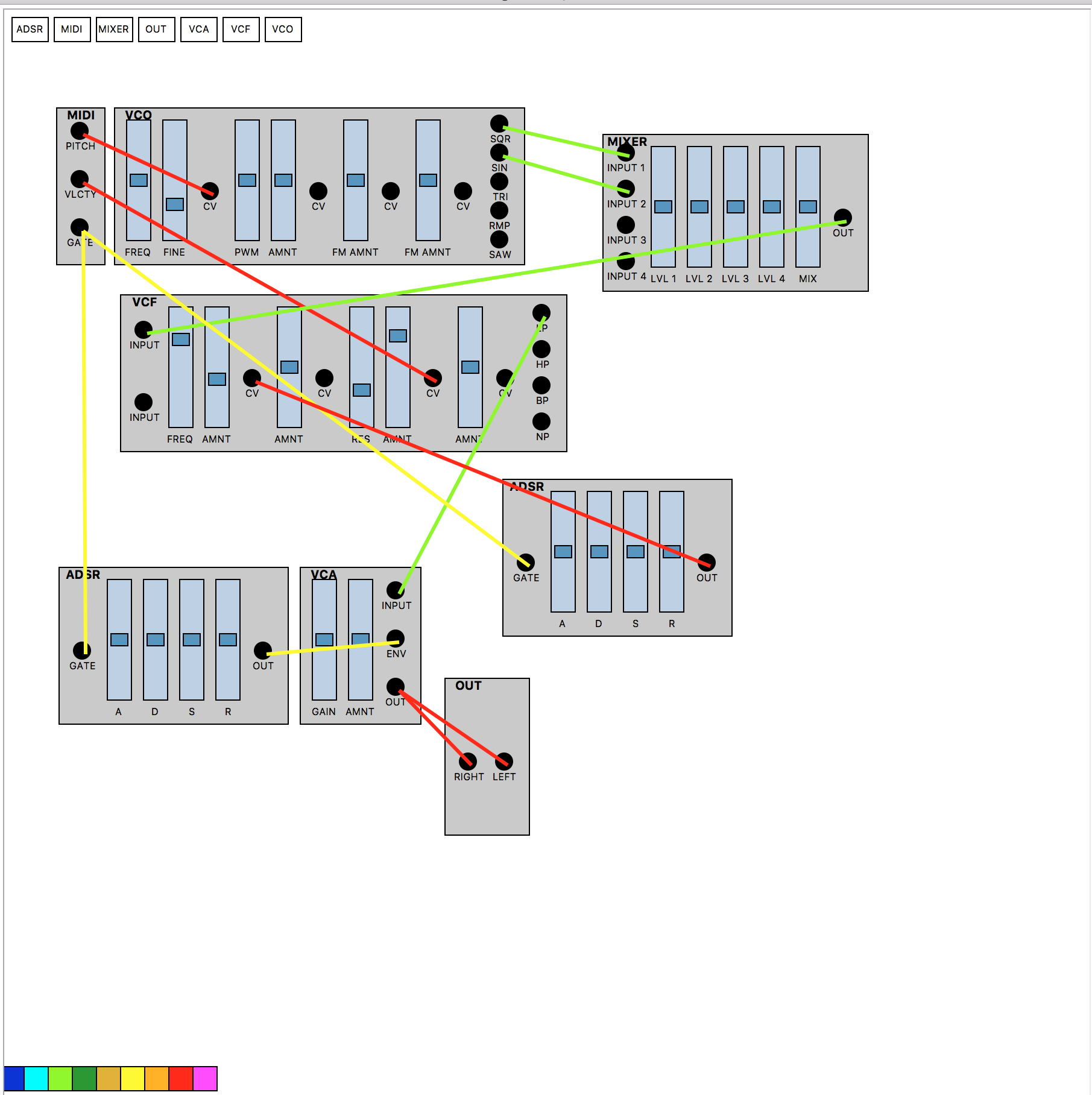-
jersupereq
posted in news • read moreSmall update. Things are working for the most part, still doing some debugging of the GUI and working on the distributed aspect running across the Pi's so I wouldn't recommend trying it out and expecting everything to work. The graphics have changed a bit as well. Here is the github repo if anyone is interested in checking it out. The graphics have also changed a bit. I will soon update the needed repos for running it, on the github page.
https://github.com/computerstaat/PDModular

-
jersupereq
posted in technical issues • read moreThis is what I added into my patches to deal with feedback loops, As long as it exists right after inlets or before outlets it wont get a DSP loop
feedbacker~.pd
Edit: These only add a 1 block offset to the cycle, so if there is very little computation in the feedback loop they will not stop the DSP Loop issue -
-
jersupereq
posted in technical issues • read moreI'm working on an application using PD and want to allow for feedback loops in the signal path. I want to have the logic to offset the processing by 1 block within each object instance so I don't have to deal with lots of send receive objects between the modules. Since there can be multiple instances of the same model a send/receive or delwrite/delread within the module would be broadcast to all other instances of that object. I have read up on the block~ object but haven't had any luck using it and it seems to up the resources needed for the program. Are there any other methods that will allow me to accomplish these feedback loops?
-
jersupereq
posted in news • read more@EEight No sounds yet, still working on the UI, midi implementation and deployment on hardware at the moment. All of the modules are currently relatively basic but I hope to make some more complex oscillators, modulation sources, etc once the infrastructure is complete..
-
jersupereq
posted in news • read more@seed Don't think I'll be able to beat the beauty of those modules.
-
jersupereq
posted in news • read moreSo I'm working on a project right now and I'm interested in getting some input on the project as I'd like to open source it when I finish. Its a similar idea to the Nord modular but implemented in PD, Python and C. I will try to keep this up to date as the project continues and if there is interest I would be happy to upload some of the code to git
Parts:
Python GUI for building synthesizer utilizing pyata and tkinter
PD objects for each module(VCO, VCA, ENV, MIX, VCF, MIDI, OUTPUT)
Raspberry Pi Cluster(1 conductor and 4 voices) connected via an ethernet switch a d voices ran through a passive mixer
C program for converting midi to OSC messages and sending them to each voice for polyphony as well as uploading your patch of choiceThe main idea is that you build a synthesizer patch in the GUI which runs on the conductor which is converted to a PD patch. This patch is then chosen on the conductor raspberry pi when in play mode and is distributed to the 4 voice raspberry pi. All pi's are connected through a switch. This signal for each voice is sent through a passive 4 channel stereo mixer which is sent to a speaker or headphones. A midi controller is plugged into the conductor via usb and its knobs/sliders can be mapped to slider objects within the patch
Adding Modules:
A module consists of a pd object and a python array that represents the inputs and outputs and generates the module object within the application. This will allow for the simple addition of new modules as long as they adhere to the input and output specifications. I hope to add substantially more modules once I get the minimal set needed to build a basic synthesizer.
Would people be interested in something like this at all?
-
jersupereq
posted in patch~ • read moreHas anyone created a biquad filter that returns the output as a value stream and not as an audio stream? I could really use this object for a project I'm working on and am having trouble figuring out how to compile c code into pd objects. I know taking a snapshot of every sample is possibly an option but the overhead seems much larger than doing the computation of biquad. Thanks!
-
jersupereq
posted in patch~ • read moreMade a simple preset manager with a graphical interface, thought it might be useful to someone. Basically takes in up to 20 numbers and stores them in a text document, which can be called upon at any time. The y range on the array can be changed to better suit the values you are using. As of now it is set for numbers between -100 and 100, so anything out of that range will stretch outside of the array but will still work.
Just change the read & write locations to a location on your computer and everything should work fine.
-
jersupereq
posted in technical issues • read moreLooking for some help with an idea im working on. I want to use a series of faders between 1 and -1 to draw out a wave-shape, i saw a video somewhere online of someone doing this but can't re-find the link to ask them how they did it. I can connect touchosc to puredata and do that part, im just confused as to how i would send a series of numbers into an array or graph, I've tried packing a series of numbers into a message, but then I'm not sure how to create it from there, sinesum and cosinesum don't seem to work the way i want them to, any ideas or instructions would be great
-j
